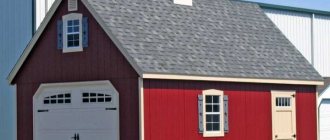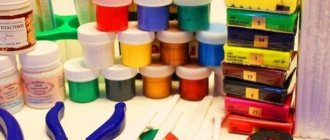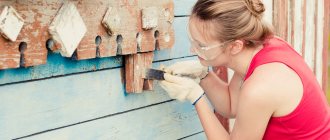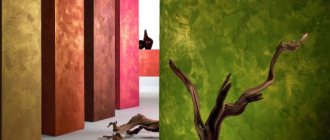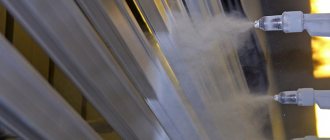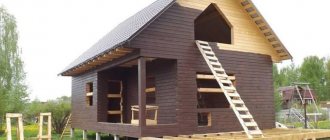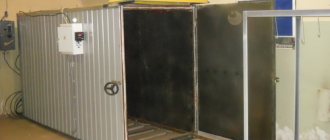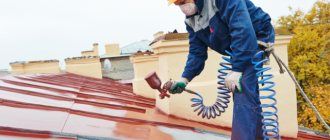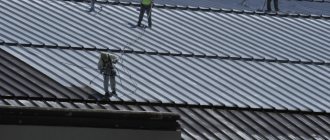04/30/2021 Author: VT-METALL
Issues discussed in the material:
- In what areas is powder painting of metal products used?
- What are the stages of powder coating technology for metal products?
- What are the advantages and disadvantages of powder coating metal products?
- How to paint metal products with various types of powder paint
- What equipment is needed for powder painting of metal products?
In order for products and their components (parts) to be protected from the negative influence of external factors and to look aesthetically pleasing, they must be painted. What you get in the end depends entirely not only on the paint layer and the quality of the materials, but also on the technologies used. The usual liquid painting method has been replaced by powder painting of metal products, which is increasingly used in modern manufacturing enterprises.
Scope of application of powder painting of metal products
Metal products began to be coated with powder paints back in the 60s of the last century. There were many prerequisites for such an innovation, including economic benefits, concern for the preservation of the ecosystem, and the aesthetics of the product itself. It all started with the application of an anodizing and electrostatic coating system. These innovations turned out to be quite practical: the service life of the products increased due to their increased stability in contact with the external environment.
Powder coating of metal products is an environmentally friendly processing technology, as it is practically waste-free, and the products themselves become of higher quality. Moreover, this can be said not only about decorative coatings, but also about decorative polymer ones.
The powder is applied to the surface to be treated according to a certain method. The first thin layer of powder undergoes heat treatment (melts at a temperature of at least 160°). After this, the product is coated with an even, continuous layer of dye. Considering that this method involves heat treatment at high temperatures, it is only applicable to metal or glass products. Over the past decade, powder coating of metal products has expanded its scope, covering various manufacturing industries that use paints and varnishes to process parts.
What does powder paint consist of? This dispersed mixture includes many components in the form of a set of tiny particles and air. In addition, additional impurities and color pigment are necessarily added to the dye.
It is worth paying your attention to what determines the cost of powder coating, since the price range is quite wide. So, the final cost takes into account the surface features of the product, the method of painting and the work of a specialist.
Powder painting of metal products is carried out with a dry mixture consisting of many different additives, including resins, hardeners and pigments - all components have the form of tiny grains (10 - 100 micrometers). A distinctive feature of the dye is the absence of a solvent, both in the composition itself and during the work process.
The range of applications and intended purposes of the technique are limited: metal products requiring anti-corrosion protection or to increase electrical insulation.
Powder painting of metal products can solve three problems: economic, environmental and practical (the safety of using such parts increases). And this is in addition to the fact that the use of this method improves the physical and chemical properties of the coating. These advantages have been appreciated in the following industrial sectors: automobile and instrument making, agriculture, construction and some others, for example:
- powder painting of metal household appliances (household equipment, refrigerators, washing machines, etc.);
- coating of aluminum used for the production of windows, doors, medical equipment and commercial equipment;
- products used in construction: profiles, facades, rolled metal, roofing materials and more;
- cars and other vehicles (bicycles and motorcycles), including coverage of their parts and spare parts:
- powder painting of products from other materials: glass, ceramics, stone, MDF and gypsum;
- production of sports equipment.
In addition, this technique is often used by reputable automobile concerns.
What are the practical uses of powder coating? Let's look at this using the example of the production of aluminum window profiles. The factory producing such products must have a special powder coating line. Thanks to this treatment, the product is able to retain its external data and quality characteristics for at least 15 years.
Powder painting technology for metal products
- Surface preparation.
When preparing a product for painting, it is necessary to take into account that the surface must be treated not just with a film-forming liquid, but also with a powdery material that should evenly cover the entire surface. At this stage, you must solve two problems: clean the surface of all possible contaminants and roughen it. Surface preparation can be carried out either mechanically or chemically (for example, degreasing or etching).
- Application of powder materials.
Powder painting of metal products is carried out:
- by electrostatic spraying;
- gas-flame method;
- by immersion in electrified powder.
Electrostatic spraying is the simplest and most versatile method. That's why he became the most popular. Technologies for coating flat surfaces are similar to those used in copying equipment (magnetic brushes and rollers). Unlike the previous one, the gas-flame method is used extremely rarely, since the resulting coating is uneven and of poor quality. Immersion in a layer of electrified powder is most popular in the production and processing of products of the same type. As a rule, a special conveyor line is equipped for this purpose. In addition to the above methods, plasma spraying is used today, which involves the use of heat-resistant powders (their particles are heated using low-temperature plasma). This method is suitable for applying a thin layer of coating to heat-resistant products.
We recommend articles on metalworking
- Steel grades: classification and interpretation
- Aluminum grades and areas of their application
- Defects in metal products: causes and search methods
Thanks to the interaction of the surface and the paint (electrostatic forces of neutrality and charge), powder painting of metal products is carried out evenly and the particles are securely fixed. Before “coming out” of the gun, the paint particles are electrified:
- the electrodes create a coronary charge field;
- due to contact with the surface of the equipment (gun).
Typically, the particles have a negative charge, the value of which corresponds to the range in which the particles will be retained on the surface until a liquid film corresponding to the technology appears. The process can be regulated in two ways: the particle speed, which depends on the friction force, area and material, and the properties of the electrode.
Powder painting of metal products by electrostatic spraying is suitable for both horizontal and vertical surfaces. Grounding provides a metal product with zero charge.
- Formation of a liquid film (polymerization).
Powder materials, when heated to a viscous-fluid state, form a film. This process works as follows:
- the material is deformed and acquires viscous fluidity;
- air is removed;
- the surface of the substrate is wetted with the resulting liquid.
The production of pipes and metal profiles is carried out by applying powder to preheated parts in a “boiling layer”: the concentration of heat leads to polymerization.
If thermosetting paints are used for coating, exposure at high temperatures leads to chemical hardening of the film. This effect is achieved through polymerization or polycondensation of the particles that form the coating. This painting method cannot be called economical, since it entails an increase in time and material costs with low labor productivity. To quickly cure the film, it is more profitable to use compositions that act under ultraviolet irradiation and are based on thermosetting resins.
- Final formation of the coating.
The film is finally formed when the product cools completely. This can occur under conditions that differ in the duration of cooling and external influence. The coating formation conditions can influence its quality and adhesion forces, changing them by several tens of percent. Fast and slow cooling are used depending on the type of dyes. The internal stress of the coating can be reduced to zero if plasticizing polymer media are used.
With thermoplastic dyes, you can use the technique of “duplicate sintering” - this makes it possible to eliminate coating defects. This cannot be done with thermosetting paints.
Tribostatic spraying
Tribostatic powder coating technology.
Rice. 4 - Tribostatic spraying - friction charging.
Unlike electrostatic spraying, this system does not have a high voltage generator for the sprayer. The powder is charged during friction.
The main goal is to increase the number and strength of collisions between powder particles and the charging surfaces of the spray gun.
One of the best acceptors in the triboelectric series is polytetrafluoroethylene (Teflon); it provides good charging for most powder paints, has relatively high wear resistance and is resistant to particle adhesion under impact.
Rice. 5 – There is no Faraday cage effect
In atomizers with tribostatic charging, neither a strong electric field nor an ionic current is created, so there is no Faraday cage effect or reverse ionization. Charged particles can penetrate deep hidden openings and evenly paint products of complex configurations.
It is also possible to apply multiple layers of paint to achieve thick powder coatings.
Sprayers using tribostatic charging are structurally more reliable than spray guns charging in a corona discharge field, since they do not have elements that convert high voltage. With the exception of the ground wire, these sprayers are completely mechanical, sensitive only to normal wear and tear.
Table. Characteristics of the main types of conversion coatings.
| Type of phosphate coating | Color | Layer (g/m2) | Thickness (µm) | Porosity(%) | Pencil hardness |
| Iron phosphate Fe3(PO4)2 8H2O | Blue | From 0.1 to 0.5 | From 0.1 to 0.5 | From 0.5 to 1 | N |
| Zinc iron phosphate Zn2Fe(PO4)2 4H2O | Moderate gray | From 10 to 30 | From 5 to 15 | From 0.05 to 0.4 | NV |
| Zinc phosphate Zn3(PO4)2 4H2O | Grey | From 2 to 10 | From 1 to 5 | 0.05 to 0.5 | From НВ to >Н |
| Zinc calcium phosphate Zn2Ca(PO4)2 2H2O | Light gray | From 1.5 to 6 | From 1 to 3 | From 0.05 to 0.4 | From НВ to >Н |
| Manganese phosphate (MnFe)5H2(PO4)4 4H2O | Dark grey | From 8 to 40 | From 3 to 25 | From 0.5 to 3 | From B to >HB |
Advantages and disadvantages of powder coating of metal products
Advantages of powder painting of metal products:
- Minimize waste. Using quality equipment increases efficiency by almost one hundred percent.
- Improving sanitary and hygienic working conditions. This technology is considered environmentally friendly and safe. The concentration of harmful substances does not reach the established standards even during oven treatment.
- No solvents. This allows you to minimize the number of pores on the surface of the product and reduce shrinkage.
- Economic benefit. Powder painting of metal products goes through the entire cycle within 30 minutes, giving a better result (one layer of paint is much thicker than with conventional processing). In addition to saving materials, it is worth noting the reduction in production space and costs for packaging painted products.
- Increased surface stability. Powder coating more reliably protects the product from exposure to ultraviolet radiation and corrosion.
- Rich color range. The palette of powder paints exceeds 5 thousand colors.
- High level of security. The level of fire and explosion hazards in production is reduced.
Disadvantages of powder coating of metal products:
- High melting point of the powder. The need for heat treatment at temperatures above 150°C limits the range of applications for powder coating (you cannot work with plastic and wood).
- It is almost impossible to apply paint in a thin layer.
- Limited use of equipment. It is impossible to paint a large surface in a small oven, and a large oven is unprofitable for processing small parts.
- Large investment to launch a new line.
- Lack of ability to locally eliminate painting defects. If the result is not entirely satisfactory, then the entire product must be repainted.
- You can't do tinting. You can only work using factory paints.
Painting metal products with various types of powder paint
Depending on the type of charge received, electrostatic and tribostatic methods of application are distinguished.
With the electrostatic method, a high voltage charge (20 - 100 V) is supplied by a discharge electrode. Such installations are characterized by increased power and productivity. The speed of the air stream depends on the electrode voltage (voltage decreases - speed increases).
To achieve the tribostatic effect, you need a gun in which the body is made of fluoroplastic. It is achieved due to the friction force of the particles against each other and against the gun.
Equipment for the tribostatic method is not as expensive as for electrostatic painting, but the productivity is much lower. A smaller percentage of paint settles on the products. Gun parts periodically need to be replaced due to wear. In addition, many paints require adapting additives, since they are not charged by friction. This method is most suitable for coating products with grooves and recesses. Powder painting of metal products with complex shapes is of lower quality, since unpainted areas may remain.
There are 3 categories of resin mixtures:
- epoxy;
- polyester;
- epoxy-polyester.
Epoxy paints are the most resistant to various chemicals and oil. If epoxy paint is applied to the product, it does not need to be primed. Moreover, such paints can be used as a primer for liquid powder dyes. The paint layer should not exceed 500 microns.
Epoxy paints have insulating properties, which is why they are most popular in the electrical and radio engineering industries. They process metal products that must have increased resistance to corrosion. Some metals require phosphatization (for example, ferrous metals and galvanized steel), and some require chromatization (aluminum and its alloys). Powder painting of metal products with epoxy paints forms a durable anti-impact coating.
Polyester paints have high adhesion, so they can be applied to light alloys and metal. They are a good electrical insulator and are resistant to atmospheric and mechanical influences. The paint layer may be destroyed upon contact with alkali.
Epoxy-polyester paints are a decorative option for powder coating. They can serve as a basis for working with embossed leather (creating a metallic or aged surface effect). Powder painting of metal products with epoxy-polyester compositions is less practical than the examples described above, since such a product is more susceptible to corrosion and the negative effects of atmospheric phenomena.
Characteristics of powder paint
The main requirements for the coloring composition: uniformity, physical and chemical stability, particle size - 50-100 microns. Powder paints contain:
- particulate matter;
- film-forming resins – epoxy, polyester, polyethylene, polyvinyl chloride;
- hardeners;
- fillers;
- special additives.
Depending on the presence or absence of coloring pigments, pigmented and non-pigmented systems are distinguished. Materials of the first type form a surface layer in the selected color range. Non-pigmented compositions, often called powder varnish, are in demand for coating conductive metal products.
The first powder paints were made based on epoxy resins. They are still used today due to their high adhesion to the base, strength and resistance of the coating to various types of solvents. Their disadvantage is the appearance of a yellow tint when heated. It does not impair the performance properties of the paintwork, but does affect the appearance.
Powder compositions based on polyesters are suitable for painting metal products and structures used outdoors. This coating does not turn yellow, has good gloss, satisfactory adhesion to metal products, and good chemical resistance. Super-strong polyesters are used when there are high requirements for the mechanical strength of paintwork. One of the significant advantages of polyester compositions is the low curing temperature, which allows the composition to be applied to materials that do not tolerate high temperatures. Urethane materials have properties similar to polyester powders.
Advantages of powder painting of metal products over liquid painting
When comparing powder and liquid painting, you should immediately pay attention to the economical benefits and environmental safety of the powder method. This is explained by the fact that conventional (liquid) painting requires flammable toxic solvents, but this is not necessary for powder painting. In addition, particles of such paint can be reused if they have not settled on the product. So, powder painting of metal products provides the following advantages:
- High physical and chemical properties (higher shockproof qualities, more resistant to weathering and corrosion).
- Uniformity of distribution (the layer of powder paint is more even).
- There is no need for additional processing of the product (it does not need to be primed).
- Fewer layers of paint (with liquid painting, you need to repeat the process at least twice, and with powder, one layer is enough).
- It is easier to change the color of the product.
- Less percentage of production waste (up to 40% of paint is lost with liquid painting, and no more than 4% with dry painting)
- Short painting cycle (to complete the full cycle with liquid painting, it takes quite a lot of time to dry the product, while with the powder method, the whole job takes no more than 2 hours).
- Convenient storage of materials (no need to create special conditions).
- Convenient and economical transportation (there is no need to spend additional money on packaging, since the surface of the product is covered with a polymer film that protects it from mechanical damage).
- Automation of production (training of workers occurs quite quickly).
- High sanitary and hygienic production conditions.
Thus, we can conclude that powder painting of metal products is much more profitable and practical than liquid painting, which is why most painters use liquid dyes.
This technology is one of the most popular and cost-effective today. As a result of the process, the part is coated with a high-strength surface coating layer that is distinguished by its attractive appearance and environmental friendliness.
After powder paint is applied to the product using a spray gun, the polymerization stage follows - a process that results in the formation of a hard, durable coating.
Polymerization occurs in 3 stages:
- Reflow.
- Rejection.
- Cooling.
In order for microparticles of paint to melt, special equipment is required - ovens with a polymerization chamber, in which the temperature is maintained from 150 to 220 ° C. The reflow process lasts 15-30 minutes. Time and temperature depend on the thickness of the paint layer, as well as the properties of the material and the weight of the product. It is the stability of the specified parameters that guarantees uniform heating of the product.
When heated, microparticles of paint melt, creating a viscous layer. As a result, a continuous film is formed on the surface, and the air contained in the powder dye is completely displaced. If air bubbles still remain, pores will appear on the paint coating, which will reduce its quality. To prevent this defect, the product is painted at temperatures that are higher than the melting point of the paint. In this case, the applied layer of powder paint should be thin and uniform.
As the product heats up, the already molten paint penetrates deep into the surface, after which it becomes hard. At this stage, the coating develops predetermined characteristics: structure, appearance, strength qualities, protection properties, etc.
After the curing process is complete, the surface is cooled. This stage takes place in the cooling chamber, which is included in the furnace design.
Features of polymerization of metal products
Both large and small parts with different surface thicknesses are subjected to powder coating. The surface temperature of larger products increases more slowly, compared to the increase in this indicator for small parts with thin walls. As a result, the powder paint layer is heated unevenly, which negatively affects the adhesion and strength of the coating. The problem is solved in two ways:
- the temperature during curing decreases, while the time period of this process increases;
- the part is preheated.
The polymerization mode with specified characteristics (temperature, time, etc.) is selected taking into account the type of powder dye, the characteristics of the part that is being painted, and the type of oven.
Ovens for polymerization of powder paint
For polymerization, during which the powder layer of paint melts and becomes solid, as well as its subsequent cooling, special ovens are used. The design of the furnaces includes a polymerization chamber and a cooling chamber, and the operational characteristics of the unit make it possible to set the necessary process characteristics.
The oven is presented in the form of a drying cabinet, which is controlled by various electronic elements. The furnace control unit allows you to set the required temperature, the time period for coloring, and a timer that is triggered when the polymerization process is completed.
Furnaces can run on electricity, natural gas or diesel fuel.
According to the design features of the furnace, there are:
- checkpoints;
- dead-end;
- horizontal;
- vertical;
- with one or more moves.
According to the drying method, ovens are divided into:
- convection (circulation) - the powder coat of paint is dried due to the circulation of heated air flows;
- with infrared irradiation - the intensity of IR rays is affected by the wavelength range and temperature of the emitter.
Equipment for powder painting of metal products
Powder coating is completely different from traditional liquid coating, not only in terms of quality, but also in terms of technology. And, first of all, you need to pay attention to the equipment.
You need to start painting by applying paint and varnish material to the prepared surface. For this, a special spray gun (gun) is used. As the paint passes through the gun, the paint particles receive a small charge, causing the powder to “stick” to the surface.
After this, the “sticking” powder must undergo heat treatment. It is melted in a special furnace (chamber). Therefore, it is necessary to equip a chamber in which the temperature can reach 200 - 250°C.
There are no supernatural requirements for the premises. It should be clean, light and dry. The main thing is that there is enough free space and ventilation.
Equipment for working with powder dye is selected not only according to material capabilities, but also taking into account the active area. For full-fledged activity you need:
- 2 chambers (for polymerization and powder application);
- electrostatic sprayer;
- compressor;
- conveyor (suspended);
- recuperator.
Some of this list you can do yourself, but others you will have to buy.
The polymerization oven is a key component of the paint “complex”. If powder painting of metal products is disposable, then a regular household “oven” can be used for this purpose. But, if you decide to do powder painting all the time, you will have to buy a special camera. It is impossible to give an unambiguous recommendation here, since cameras differ not only in price, but also in the type of heating. I would like to draw your attention to a new product in this industry - cameras with infrared heaters, which have the following advantages:
- you can use several colors of paints and varnishes at the same time;
- economical energy consumption (1.5 - 2 times less than convection ovens);
- precise adjustment of the temperature regime of the chamber is provided;
- you can adjust the power of the emitters;
- the possibility of collecting structures is provided;
- wide temperature range (within 250 °C).
Modern chambers are equipped with ventilation, which facilitates timely removal of by-products from the oven and better polymerization of products.
What is a powder coating booth? This is a sealed cabin, which consists of:
- from a supporting frame (usually made of a channel, a metal angle or a profiled pipe);
- from metal sheets of internal or external cladding (replacement with polycarbonate sheets is allowed);
- from floor electrical insulation (you can use a simple rubber mat).
As you can see, there is nothing complicated about the camera and you can make it yourself. The main thing is to take into account some nuances.
Firstly, the corners inside the chamber must be rounded and the joints sealed. This is necessary to speed up the cleaning process of the chamber and the ability to simultaneously work with different colors of powder dye.
Secondly, the metal sheets used for cladding must be painted, preferably powder paint.
Thirdly, if you are installing an overhead conveyor, then there must be a corresponding chamber - a walk-through chamber. Therefore, doors will be required through which hangers for the parts will be passed.
The next important point is lighting. The ideal option is LED lights or fluorescent lamps. Since such lighting devices do not glow, the possibility of “unexpected” melting of the paint and its sticking to the lamps or to the walls of the chamber is eliminated.
An electrostatic spray gun is an indispensable equipment for powder painting of metal products. The main tool of a modern painter working with powder dyes is a tribostatic sprayer.
Triboelectricity is the first method invented by man to generate charge. Its essence is to generate electricity by rubbing objects against each other. Unlike spray guns, tribostatic equipment has the following capabilities:
- painting parts of complex shapes;
- high-quality application of powder dye;
- reliability of design;
- uniform distribution of powder.
In addition, tribostatic equipment is convenient for working with multi-colored dyes. The powder is located in a removable half-liter tank (if necessary, it can be easily removed and another one can be attached).
Powder painting of metal products requires not only the presence of main, but also auxiliary equipment.
A compressor is required to supply compressed air. When choosing, pay attention to the following characteristics: the presence of a high-pressure filter, power and performance.
A recuperator is required to remove powder particles from the chamber. For this purpose, you can use a cyclone-type household vacuum cleaner. Modern vacuum cleaners are not a very good solution to the problem, since the dust collectors built into them will quickly become clogged with powder particles.
If you have large production volumes or you need powder coating of large metal products (for example, large body parts), then you simply need to set up a transport system. You can make it yourself or buy it. This will make it possible to customize the movement of parts from stage to stage.
To make the system yourself, you need a monorail and a carriage with suspension. It can work in both automatic and manual mode. Electric hoists can be used for automation.
In addition to all of the above, do not forget that the workplace must be safe. Therefore, be sure to consider the ventilation system in the chamber and ground the electrical wiring of the room used for painting.
paints and varnishes
0 votes
+
Vote for!
—
Vote against!
Powder coatings are applied to products mainly by automatic or manual sprayers, and then undergo polymerization in a special oven and at a precisely specified temperature. Since the price of powder coating in specialized salons is quite high, today we will try to carry out this procedure at home. But before that, you need to first worry about choosing the room where you will do the work, buy the necessary equipment and carefully prepare the surface. So here we go!
Equipment selection
For a complete and high-quality powder painting process, you need to choose the right room where the procedure will take place. For such purposes, a regular garage is suitable, with enough free space for work.
So, work on painting the surface with powder paint should begin with preparing equipment for powder painting of metal. The main equipment is a special camera. This is where the bulk of the process takes place. The characteristics of such a furnace depend on what materials and products will be processed.
The painting chamber includes the chamber itself, where powder paint is sprayed, and a melting furnace. If you do not plan to paint constantly, there is no need to buy a professional oven; you can use a regular oven for this work.
In addition to the camera, the powder painting process requires an electrostatic spray gun that allows you to connect compressed air. A compressor can also be used for this purpose. When purchasing a compressor, you must pay attention to the presence of a high-pressure filter in the package.
Before powder painting, care should be taken to ensure that all technological processes are carried out in a room with good lighting. You can use fluorescent lamps for this, this is necessary so that the paint does not stick to the hot surface of the lamp. And of course, during the painting procedure there must be excellent ventilation in the building, without which the whole process turns into harmful to the body.
You can use a recuperator to collect leftover powder paint. But at the initial stage, an ordinary cyclone-type vacuum cleaner is also suitable, since a “traditional” vacuum cleaner will most likely clog. In order for the procedure to proceed smoothly and without failures, it is recommended to take care in advance of a powerful electrical network with grounding.
When processing large-sized products or large volumes, it is customary to use a special transport system. This allows the painted parts to move easily throughout the powder coating process between stages.
The operating principle of the transport system lies in the fact that the parts to be painted are transported on trolleys or a special suspension that move along rails. Such a transport system allows for continuous painting, which, in turn, significantly increases the productivity of the entire work process.
Surface pre-treatment
Product preparation is the longest and most labor-intensive process, which is often not given much attention, but the quality, elasticity and durability of the coating depend on it. Pre-treatment of the surface for painting involves removing any contaminants, degreasing the part and phosphating to increase adhesion, as well as protecting the metal from corrosion.
Clean the surface to be treated chemically or mechanically. For mechanical cleaning, steel brushes or a grinding disc are used; a grinding procedure with a clean cloth soaked in a solvent is possible. As for chemical processing, it is carried out using an alkaline, acidic or neutral composition and solvents, which are usually selected depending on the level of contamination, material, type and overall dimensions of the surface being treated.
Applying a conversion sublayer, as shown in the powder coating video, prevents moisture and various contaminants from getting under the formed coating, which provoke peeling and future destruction of the coating. The procedure of phosphating the surface with the application of inorganic paint allows you to increase adhesion - the adhesion of paint to the surface by 2-3 times and protect it from rust formation.
When removing oxide (rust, scale and oxide film), abrasive (shot blasting, shot blasting, mechanical methods) and chemical cleaning (etching) are very effective. Abrasive cleaning is carried out using small particles (sand, shot), steel and cast iron granules, nut shells, which are fed at high speed to the surface of the product by centrifugal force or compressed air streams. These particles are capable of breaking off pieces of metal with rust, scale or other contaminants, which significantly increases the adhesion of the coating.
Pickling is the removal of rust, oxides and other contaminants using solutions based on nitric, hydrochloric, phosphoric and sulfuric acid or caustic soda. They contain inhibitors that slow down the dissolution of the cleaned surface. The advantages of chemical cleaning over abrasive cleaning are high productivity and ease of use. But after such a procedure, it is recommended to rinse the cleaned surface from solutions, which requires additional use of a cleaning agent and increases the cost of powder painting.
The final stage of surface preparation is passivation - treatment of the body with chromium and sodium nitrate compounds. Passivation is carried out in order to prevent secondary corrosion at any stage of surface preparation - after phosphating, degreasing or chromate plating. Having completed the process of rinsing and drying the part in the oven, we can assume that the surface is ready for applying paint in powder form.
Powder paint application
After completing the pre-treatment, you can place the object to be painted in the spray chamber, where special powder paint will be applied to it. The main purpose of such a box is to catch powder particles that have not had time to settle on the part being painted, to dispose of the paint composition, and to prevent it from entering the room. The painting chamber inside has a filter system, cleaning equipment (vibrating screens, hoppers) and a suction system.
There are through and dead-end types of boxes. It is customary to paint products that are small in size in dead-end painting booths, but large-sized items are painted in long ones. There are also known automatic models for powder painting of metal, where the powder coating is applied to the surface in a matter of seconds using manipulator guns.
The most common method of applying powder paint is electrostatic spraying - applying an electrostatically charged substance to a grounded part using a pneumatic sprayer, which is called a gun, spray gun or applicator.
Formation of coating
When you have already applied paint to the product, it should be sent to the next stage - the formation of the coating, which includes melting the paint layer, forming a film on the coating, curing and cooling the product.
The reflow process is carried out in a special chamber or oven. There are many types of these polymerization chambers, depending on the specifics of production, their design may vary. In simple terms, such an oven is a kind of drying cabinet that has electronic “stuffing”.
Using the control unit, it is possible to control the temperature of the chamber and the dyeing period, and set automatic shutdown at the end of the dyeing process. The energy source for the polymerization chamber is electricity, fuel oil or natural gas. There are vertical and horizontal, dead-end and pass-through, single- and multi-pass painting ovens.
The procedure of melting and polymerization, according to powder painting technology, is carried out at a temperature of approximately 150-220 degrees Celsius for 15-30 minutes, as a result, a film is formed, that is, polymerization of the powder paint occurs. The main requirement for a polymerization chamber is to constantly maintain a certain temperature so that the product being painted is heated evenly.
The required mode for creating the coating is selected taking into account the product, the type of powder paint and the painting oven. At the end of the polymerization procedure, the painted product is cooled in the open air; after cooling, you can consider that the coating is ready.
Paint baking process
After powder painting the surface with your own hands, the product must be placed in the oven, which must first be preheated to approximately 210 degrees Celsius. The paint must be “baked” for approximately a quarter of an hour. However, it is not at all prohibited to open the oven to check the condition of the paint. After the paint has completely dried, carefully remove the metal from the oven and wait until it cools.
When powder coating, remember that heated metal is softer (and very hot), so find a secluded place for it so as not to accidentally touch it and get burned. Once the metal has cooled, you can admire your work! Powder painting is now complete.
